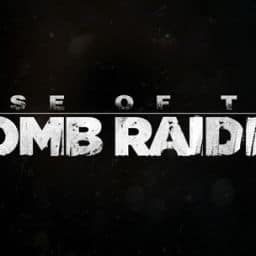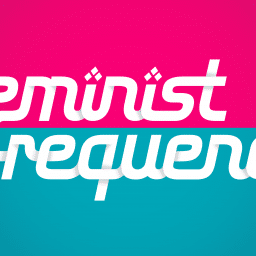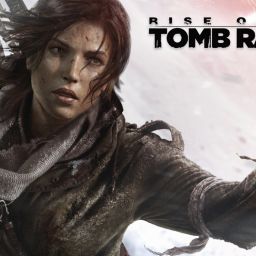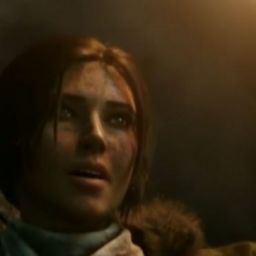We’re slightly over the halfway point in Rise of the Tomb Raider, which means, if TR2013 is any indication, that it’s about time for things to start to get supernatural and weird. The game does not—spoilers!—disappoint.
When we return to Lara in the archive tunnels beneath the Cathedral, we find her staring into a dark tunnel, remarking to herself that “I don’t know what I’ve gotten myself into here. Something else dwells in the darkness.” As Lara proceeds, there are weird screams and noises coming from below. She starts to gag on “That smell… burned alive.” (Well, that’s something to look out for, then.) One of the burned men is still alive, and after scaring the crap out of me, he begs for death. (Okay, dude. I shoot him—nothing good can come of leaving him alive, since he’s not going to be rescued by Trinity, and I’m pretty sure he’s going to die anyway, if the eyeless guy from the train station is any indication.) Lara asks, “Who could have done this?” A deep, echoing voice that isn’t understandable booms something incoherent, and Lara asks, “What the hell is that?” (Pretty sure the answer is “the Deathless” and the language is either Byzantine or unearthly.)
Lara then spots jars of Greek Fire and wonders if “they can still burn.” (Of course they can. And since that’s the only way forward…) They explode, clearing the path. Beyond, Lara finds another journal from Decius (a Byzantine follower of the Prophet) which explicitly connects the Vatican with Trinity, saying that “the Knights of the Order of Trinity…have come to silence the Prophet—to quell his blasphemy and eradicate our movement.” Evil Vatican minions—my favorite.
There are jars of Greek Fire everywhere in the next chamber, and hooks on the ceiling for Lara to swing from. This makes me extremely nervous. I can’t help but feel that I’m going to have to use them to kill some nasty somethings. I don’t like nasty somethings. There are also baskets of health berries. That does not help to make me feel any better. As Lara skirts the room, she begins to approach an altar and a cutscene takes over.
On the altar is a twelve-sided artifact that seems to be glowing from the inside. Lara looks up at the hole in the roof and the massive storm outside. She picks up the Atlas (seriously? Didn’t you ever watch Indiana Jones, girl?), just as a grenade bounces across the floor. (Oh, so I’m going to have to kill Trinity. Better than some scary creepy things.) Two rooms of Trinity soldiers, then a long cave-like tunnel down into the water (dear god, more water… although at least since I’ve gotten to the geothermal valley I’m no longer nearly as concerned about hypothermia).
When she surfaces, there is a Trinity soldier who says, “Freeze! Hand over the Atlas,” immediately before being run through by a sword and falling—with his fuel tanks—on top of Lara and sending her to the bottom. She shoves him off, grabs his re-breather (yay! I now have a rebreather!), and continues on. The water above her is now on fire (so of course she can’t go back up to see what it was that ran him through), so she has to proceed through the flooded tunnels underwater until she comes to an exit.
In the next chamber, as Lara approaches one of the exits, the shadow of a Trinity soldier appears, and then he’s skewered by something, which backs away. (That’s not creepy at all. So why, exactly, have I decided to go where the bad things happened? No idea, but I am.) There are Trinity, but nothing else. There’s also a ceiling trap, just like the ones back in Syria, which I’d forgotten about, so I may have actually yelled “Shit!” out loud. Or maybe that was just Lara.
Lara has to knock down a statue of the Prophet in order to exit (that seems… blasphemous). When she does, some really creepy armored Byzantine guys show up, and one of them gestures toward her in a way that very clearly says “kill her,” although he totally sounds like Jabba the Hut, so I’m having a really hard time taking it seriously. Time to run, jump, swing, etc. As she’s leaving, Jonah (yep, Jonah, who she’d left on the side of the mountain with explicit instructions not to come after her… even though we all knew he was going to anyway) radios her, asking, “Lara! Lara are you up there?” and is very excited that she’s still alive, laughing and calling her “Little bird! You’re alive! I knew it!” Jacob’s people found Jonah “half-dead out on the tundra” and brought him in.
Below the cliff where Lara emerges is one of the tombs that required the re-breather, which Lara now has, so of course I’m going to go there first.
Well, this tomb is… different. There is a whirlpool and pumping water from something that alternates between grates–the Byzantine water (naturally) version of that stupid piston trap that’s in every science fiction movie ever and fire trap in every Indiana Jones movie. Across that is a Base Camp [Whirlpool Sanctuary], a “scrollcase, inlaid with ivory and gems” that has been used to store herbs. There’s also a trap on the way out.
Inside, she finds a journal from a citizen of Kitezh: “The dead choke the rivers. Our children’s blood is spilled on the valley floor. We live, but with what? Our city entombed? Our sons and daughters murdered? Is it courage to go on, or madness? Those who fell know peace, now. When will we?” The despair here resonates–the stories of refugees coming out of war-torn countries: Syria, especially, making the origins of the Remnants all the more poignant in the aftermath of American resistance to Syrian refugees (something not yet in the mainstream media when the game was in production, although it was being talked about in Europe), but also Darfur, the Sudan, Nigeria, Iraq, Palestine. Syria, too, has been at war for years, although the debates raging among governors, presidents, prime ministers, and senators now, with the Presidential election on the horizon, has that nation’s name, above all others, on the minds of American and European citizens.
The “tomb” is a bathhouse, but Lara notices that there are “So many dead. What happened here? No other sign of violence…” There is another journal, from a woman, who says that “We cannot leave our children to rot beneath the sun, but there are too many graves to dig, and the earth is hard.” Does this mean they put them in a flooded bathhouse? (Yes) The codex here is on mountaineering, which will let Lara speed up her climbing.
Oddly, I feel a little bad about leaving the bathhouse dry… like I’ve violated a grave, which is marginally insane, since I’m playing TOMB RAIDER for the love of Pete, of COURSE I’m violating graves. That’s the whole premise behind the game. But I can’t cut the ropes I put up, so I have no choice.
Since I’m taking my time meeting Jacob, Jonah, and Sofia, all of them radio me to make sure I’m still alive and remind me what I’m supposed to me doing. It’s okay, guys, I got this. I know how games work.
As Lara runs up the hill, there is a group of Remnants praying in Greek at a gravesite. One of them is a man holding an infant. I don’t speak Greek (and the game doesn’t translate: “Agios a Theos…Agios profe’te’s… Agios athanatos… eleison imas”), but it sounds like a prayer to God (I recognize “eleison” from Catholic church). It almost seems as though the child’s mother is the one being buried, but I couldn’t tell you why that occurs to me. Either way, the scene is moving in the same way that the journal in the bathhouse was moving–this is a depiction of the consequences of war, the consequences of religious extremism and intolerance, families torn apart, people dying, people grieving… It’s this last that is most often left out of games; we see people killed, and then their bodies disappear cleanly into the digital ground or lay about for us to loot or even kick (to play with their ragdoll physics), but we rarely see the aftermath of all that death for the living, in the same way that our movies and even our news media focus on the gore and the cold, brutal statistics, but don’t often show us the aftermath unless it’s of our own soldiers, brought home in boxes covered with sanitary flags. I have a good deal of respect for this game for taking the time to remind us that war is about terror and grief as much as it is blood and violence.






